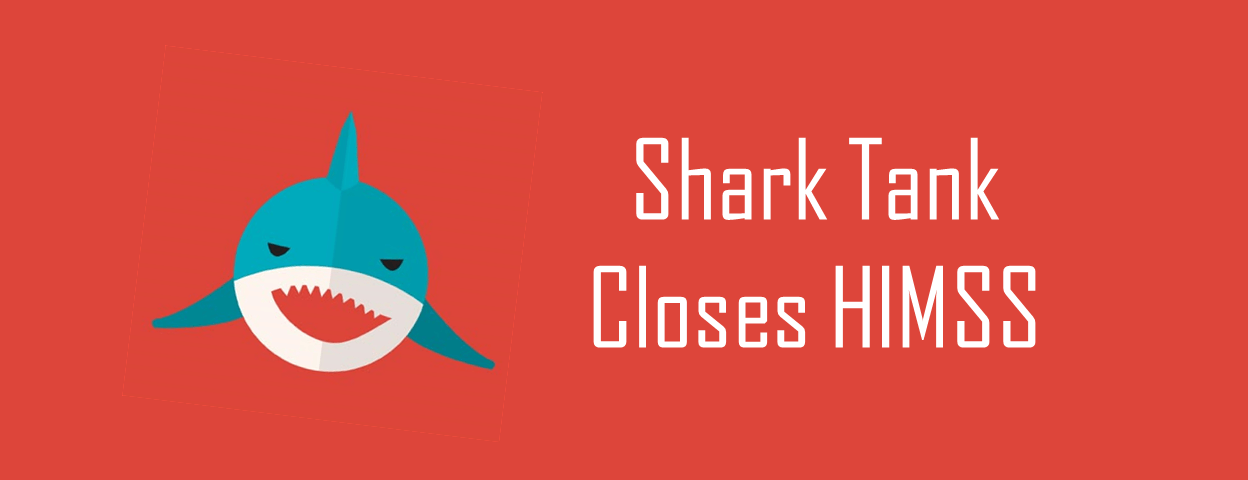Shark Tank Closes HIMSS17 with Focus on Health Records and Secure Hospital Workspaces

HIMSS17 closed last Thursday with a final salvo from Shark Tank hosts Robert Herjavec and Kevin O’Leary. Their closing remarks were very much in line with the themes of the conference:
- Security – Need to improve security of hospital systems to prevent hacking
- Workflow – Ensure a true digitization of health care records and upgrade of technology in healthcare so that improved workflow becomes a reality
- Health records –Provide the seamless transfer of patient information from one system to another
- Doctor to patient communication – Enable remote check-up or monitoring of a patient’s condition, thus allowing a doctor to intervene if a critical situation arises.
For me, as an attendee, it was great to hear these themes articulated as it integrated the numerous conversations I had at the conference into a coherent theme.
Yet this conversation provided more than just a sense of bringing organization to the hundreds of booths and presentations. It also offered a business perspective on what investors see as the real problems that need to be fixed in healthcare. As Kevin O’Leary noted, there is huge potential for profit in healthcare. However, healthcare needs to get its technological house of cards in order before the investment doors will open.
Problem #1: How do we provide a secure hospital workspace?
Do you know what the most hacked industry today is according to the FBI? It’s healthcare. Do you know what the most hacked industry in the world will be next year? Healthcare. -Robert Herjavec
Cyberattacks against hospitals, clinics and doctors cost the U.S. healthcare industry more than $6 billion a year. According to the HIMSS, 2016 Cybersecurity Survey, over 50% of healthcare organizations have experienced an external cyber-attack during the last twelve months. Without a comprehensive program in place to combat cybercrime, there is ample opportunity for hackers to exploit insecure systems.
Herjavec also noted that the future suggests a growth in hacking of health records by terrorists and foreign states who will hack for non-financial gain. They will see hacking and breaches as part of settling conflicts and determining political gain. The victims will be hospitals who have all their patient records held hostage to these bad actors and the patients who cannot be served because the hospital is breached.
Often in these cases, hospitals don’t have a ready plan of action for how to react when they are breached. Hospitals need a plan of action to get their facility back up and running. It is not enough to just have a plan in the hands of a few. Instead, there needs to be a plan that all are aware of and all on the team follow.
Problem #2: Health Records and Hospitals Need a technology upgrade
The downside of healthcare is that it is digitally backward. But the potential is huge if we can get our act together. The potential to unleash workflow is incredible. -Kevin O’Leary
This sentiment was also voiced in our discussion with Charles Webster a few weeks ago when he noted that “[h]ealth IT is about ½ generation behind other IT verticals. This is because …[t]here was no competitive pressure.” Healthcare needs an IT upgrade. Without an upgrade, the industry will continue to face inefficiencies in communication and execution.
Problem #3: Technology upgrade meets the human body
A really interesting amount of capital is ready to play in any kind of technology that can provide real time health data from a human body. Wearables were the first generation of it. Sensor tech, particularly in aging people, which can link into the data is a big area of investment. – Kevin O’Leary
We heard this sentiment as well in the pitches and conversations we had with individuals coming by our booth. Many businesses are trying to make access to healthcare less cumbersome. Two of the biggest impediments to getting necessary healthcare are accommodation – individuals are too busy with work or other commitments – and availability – inability to get an appointment soon enough.
The availability of healthcare wearables and remote patient monitoring was one of the major focuses at HIMSS as it was thought that if individuals could easily access their doctor, there was a greater likelihood they would seek medical care. Wearables have the potential to represent a $34 billion market by 2020. However, there still remains the question of how to regulate and monitor the information given out by wearables in a way which doctors can use without being overwhelmed.
The perspective from booth #343
The thousands of attendees at HIMSS were looking for a way to improve patient health and provide tangible progress to the hospitals and clinics they work at. The truth is that healthcare is several years behind other sectors in terms of technology upgrades. This is the hurdle healthcare has to jump in order to effectively compete for investor dollars, as well as to achieve technological parity.
Conclusion
The Sharks concluded by noting the age of technology is quite old in the standard hospital. We have seen this fact confirmed by the use of pagers, whiteboards and cumbersome workflows. Their talk at the close of the conference highlighted the areas that most needed improvement.
As we see it, critical alerting and messaging have an important role to play in ensuring proper notification for cyber intrusions, improving workflow and monitoring patient health. These endpoints in technology need alerting and messaging to ensure optimum performance.
What do you think? What area of healthcare is your organization struggling with? We look forward to learning about your needs and seeing how we can help.
To learn more about OnPage…





